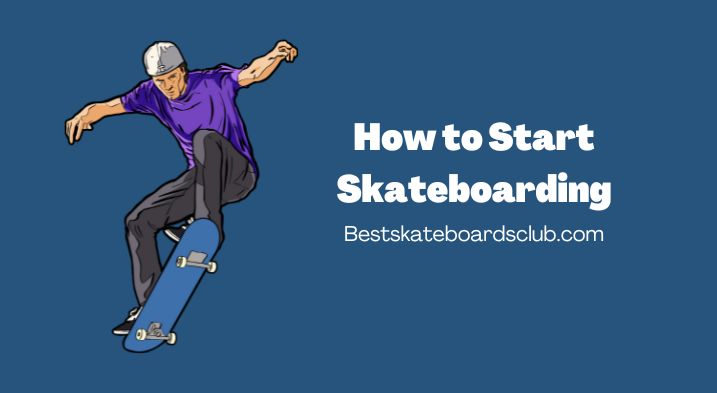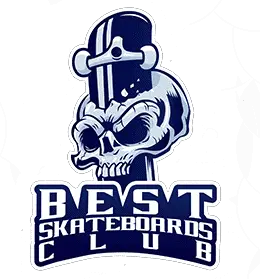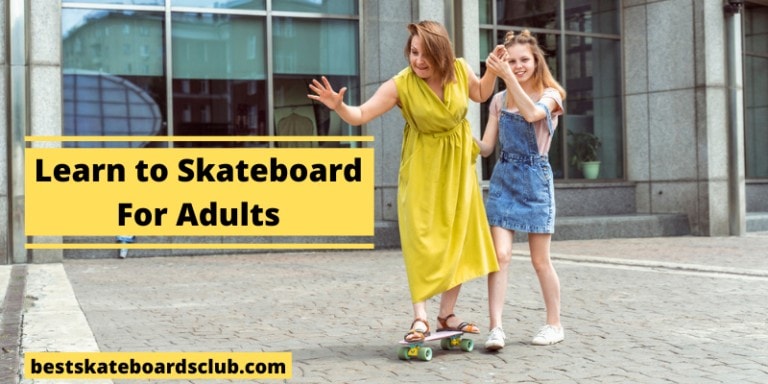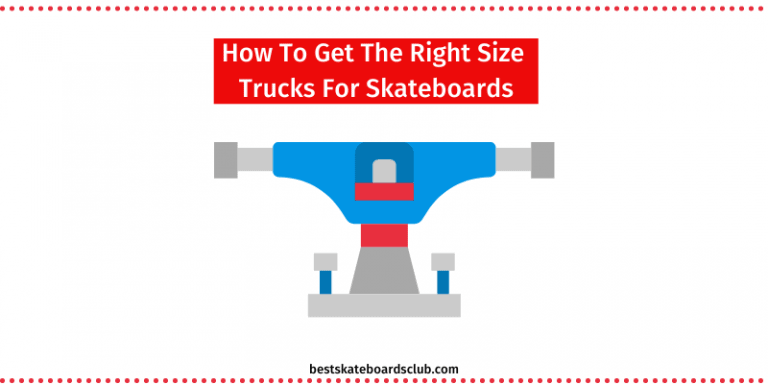How to Start Skateboarding: A Beginner’s Guide to Getting Started
Are you ready to plunge into the thrilling world of skateboarding? Our guide is your ticket to mastering this exhilarating sport. Picture yourself gliding down streets, conquering ramps, and nailing tricks. The answers to your burning questions await as we embark on this skateboarding adventure together.
Discover the joy of skateboarding as we guide you through board selection, essential techniques, and connecting with the vibrant skateboarding community. Plus, we’ll dive into crucial safety measures.
By the end, you’ll not only know how to start skateboarding as a beginner but be itching to grab your board and hit the pavement.
Ready to ride? Let’s begin!

Understanding Skateboarding
Skateboarding, a thrilling and dynamic sport, involves riding a specially designed board known as a skateboard.
It’s not just a sport; it’s a lifestyle. Skateboards are typically made of a wooden deck mounted on wheels and come in various shapes and sizes.
Skateboarding isn’t just about moving from point A to point B; it’s about self-expression, creativity, and pushing your limits.
To truly appreciate skateboarding, let’s take a ride back in time. The roots of skateboarding can be traced back to the 1940s and 1950s, when surfers in California sought ways to replicate the feeling of riding waves on land.
They attached roller skate wheels to wood planks, giving birth to the first skateboards. Over the years, skateboarding has evolved from a niche pastime to a global phenomenon with a rich innovation and cultural impact history.
Benefits of Skateboarding
Skateboarding isn’t just about mastering tricks; it offers many physical and mental benefits, making it a rewarding pursuit.
Physical Fitness
Engaging in skateboarding is a fantastic way to stay physically fit. It’s a full-body workout that challenges balance, strength, and coordination.
As you skate, you engage your core, legs, and upper body to maintain control. It’s an excellent cardiovascular exercise that keeps your heart rate and burns calories.
Mental Health Benefits
Skateboarding isn’t just about physical prowess; it’s also a mental game. It demands focus, determination, and perseverance. When learning new tricks or conquering obstacles, you train your mind to overcome challenges and build resilience.
Skateboarding is also a fantastic stress reliever. The freedom and flow you experience on a board can melt away life’s worries.
Building Confidence
One of the most remarkable aspects of skateboarding is the confidence it instills in individuals. As you progress and achieve your skating goals, you’ll experience a profound sense of accomplishment.
You’ll learn to embrace failure as a stepping stone to success. This newfound confidence doesn’t just apply to skateboarding; it permeates every aspect of your life, making you more resilient and self-assured.
By understanding the basics and recognizing the numerous benefits of skateboarding, you’ll be well-prepared to embark on your skateboarding journey.
Whether you’re drawn to the physical challenges, the mental rewards, or the sense of self-confidence it provides, skateboarding has something unique to offer everyone.
It’s time to grab your board and start rolling towards a healthier, more confident you.
Essential Skateboarding Gear
Understanding the critical components of a skateboard is vital before you take your first roll. Let’s break down the skateboard anatomy:
Deck: The deck is the wooden board you stand on while skateboarding. It comes in various shapes and sizes, and the right choice depends on your skating style. Wider decks provide more stability, while narrower ones offer better maneuverability.
Trucks: Trucks are metal T-shaped components mounted underneath the deck. They hold the wheels and allow the skateboard to turn. Properly adjusted trucks are crucial for control and stability while riding.
Wheels: Skateboard wheels come in various sizes and hardness levels (durometer). Larger wheels roll faster and provide a smoother ride on rough terrain, while smaller, harder wheels are better for tricks and street skating.
Bearings: Bearings are small, round components that fit inside the wheels. They determine how smoothly the wheels spin. High-quality bearings reduce friction, allowing for faster and longer rides.
Safety Gear
Safety should always be a top priority in skateboarding. Here’s a breakdown of the essential safety gear:
Helmet: A helmet is non-negotiable. It protects your head in case of falls or collisions, reducing the risk of head injuries. Look for helmets designed for skateboarding with proper certifications.
Also read: Best Skateboard Helmets.
Knee and Elbow Pads: Knee and elbow pads protect your joints. In the learning phase, you’ll appreciate their cushioning during falls and slides. They help prevent scrapes, bruises, and more serious injuries.
Don’t forget to read our guide on the best knee pads for skateboarding
Wrist Guards: Your wrists are vulnerable during falls, especially when you instinctively use your hands to break your fall. Wrist guards offer support and protection, reducing the risk of fractures and sprains.
Choosing the Right Gear: Gear is essential for comfort and safety. When choosing gear, consider factors like fit, comfort, and the type of skateboarding you’ll be doing. Visit a reputable skate shop or consult online reviews to make informed choices.
Your gear choice can significantly impact your performance and safety, so take the time to make informed decisions. With the right setup, you’ll be ready to roll with confidence and style.
Finding the Perfect Skateboard
Selecting the right skateboard that matches your needs and riding style matters greatly. However, unfortunately, this is one of the most difficult steps for beginners because they don’t know much about various types of skateboards and their requirements.
When finding the perfect skateboard, there are several key considerations to remember. Let’s break down the process:
Understanding Various Types of Skateboards
Understanding the different types of skateboards is essential before making a choice. Here are two crucial aspects to consider:
Skateboard Shapes: Skateboards come in various shapes, each designed for specific styles of skating. Whether you prefer street, vert, or cruising, there’s a shape that suits your needs. Knowing your style, from classic popsicle shapes to cruiser boards with a kicktail, helps you select the right shape.
Skateboard Sizes: Skateboard sizes vary in width and length, impacting stability and maneuverability. Wider boards provide more stability, while narrower ones offer better control. Choosing the right size depends on your body size and skating style.
Here’s a detailed guide on choosing the right skateboard for your needs that you might want to read.
| Type of Skateboard | Shape | Size (Width) | Recommended Riding Style |
|---|---|---|---|
| Popsicle | Symmetrical, Double Kicktail | 7.5″ – 8.5″ | Street, Park, Vert, All-Around |
| Cruiser | Kicktail or Mini-Cruiser | 7″ – 9″ | Cruising, Commuting, Campus |
| Old School | Wider and Squarer Nose | 9″ – 10″ | Pool, Ramp, Old-School Tricks |
| Longboard | Various Shapes | 8″ – 10″ | Downhill, Commuting, Cruising |
| Mini Ramp | Compact and Wide | 7.5″ – 8.5″ | Mini Ramp, Bowl, Street |
| Pool | Wide with Flat Nose | 8.5″ – 10″ | Pool, Bowl, Transition |
| Downhill | Low and Stable | 9″ – 10″ | High-Speed Downhill Racing |
| Freestyle | Symmetrical, Freestyle | 7.5″ – 8.5″ | Wide with a Flat Nose |
| Drop-Through | Low, Drop-Through | 8″ – 10″ | Downhill, Cruising, Commuting |
Skateboard Brands for Beginners
Selecting the right skateboard brand can significantly impact your experience when starting your skateboarding journey.
Beginner skateboarders should prioritize brands known for producing quality boards that offer durability, performance, and a user-friendly experience.
Here, we’ll delve into what makes a skateboard brand suitable for beginners and provide examples of popular brands to consider.
What to Look for in a Beginner-Friendly Skateboard Brand
Quality Construction: Beginner skateboarders should seek out brands renowned for their quality construction. High-quality materials ensure the skateboard is durable and withstand the wear and tear of learning and practicing tricks.
Beginner-Focused Model: Look for brands offering specific skateboard models designed for beginners. These models typically feature components that enhance stability and control, making them ideal for those just starting.
Reputable Reviews: Research and check for reviews and recommendations from experienced skateboarders and beginners. Positive reviews from new skaters can strongly indicate that a brand is beginner-friendly.
Complete Skateboard Setups: Consider brands offering complete skateboard setups for added convenience. These packages typically include a deck, trucks, wheels, bearings, and grip tape, ensuring that all components are compatible and well-suited for beginners.
Read our Darkstar Skateboard Review
Popular Skateboard Brands for Beginners
Here are some well-established skateboard brands that are often recommended for beginners:
| Brand | Notable Features |
|---|---|
| Element Skateboards | Founded by Tony Hawk, reliable and complete setups |
| Powell Peralta | Rich skateboarding history; durable boards |
| Santa Cruz Skateboards | Beginner-friendly options with appealing designs |
| Birdhouse Skateboards | Founded by Tony Hawk; reliable and complete setups |
| Almost Skateboards | Durability and innovative designs; stability emphasis |
Remember that while beginners generally trust these brands, individual preferences vary.
It’s always a good idea to visit a local skate shop or consult with experienced skateboarders to get personalized recommendations based on your specific needs and preferences.
Choosing a reputable skateboard brand will set you up for a smoother, more enjoyable introduction to skateboarding.
How to Start Skateboarding
Learning the fundamentals is crucial to building a strong foundation when starting your skateboarding adventure. Let’s explore the essential skills you’ll need to acquire:
- Balancing on a Skateboard: Balancing on a skateboard is the first step to mastering this sport. Start by standing on your skateboard with your feet parallel and shoulder-width apart. Practice shifting your weight gently from heel to toe and vice versa to find your center of balance.
- Proper Foot Placement: Your foot placement and stance are pivotal in your ability to control the skateboard. For beginners, the “regular” stance involves placing your left foot forward if you’re right-handed, and vice versa for a “goofy” stance. Ensure your front foot angles slightly forward, and your back foot provides stability and control.
- Pushing Off Safely: To start moving on a skateboard, place one foot on the ground and push off gently with the other. This propels you forward. You should practice this motion until you can push off smoothly without losing balance.
- Getting Rolling: As you gain speed, both feet should be on the skateboard. Keep your knees slightly bent for better control. Use your front foot to guide the direction and your back foot to provide stability. Lean forward to accelerate and lean back to slow down.
- Foot Brake Technique: Learning to stop safely is essential. The foot brake technique involves dragging one foot lightly on the ground to slow down and eventually stop. Practice this skill in a controlled environment until you can come to a complete stop with confidence.
As you progress through these fundamental skills, remember that practice is key. Building a strong foundation in balancing, foot placement, pushing off, and stopping will make you a more confident and skilled skateboarder.
Don’t forget to wear your safety gear and enjoy the journey of becoming a proficient rider.
Basic Skateboarding Techniques
Now that you’ve mastered the fundamentals of balance and control, it’s time to dive into some basic skateboarding techniques that will elevate your skills and open up new possibilities on your board:
Carving and Kick Turns
Turning is a fundamental skill in skateboarding. Carving involves making smooth, flowing turns by leaning in the direction you want; for sharper turns, practice kick turns, which involve lifting the front wheels and pivoting the board using your back foot.
Efficiency in Pushing
Efficient pushing and coasting are crucial for covering distances. Push with your back foot and maintain a consistent rhythm once you’ve gained speed. Coast by balancing your weight evenly over the skateboard.
Transitioning on Ramps
Riding ramps and curves add an exciting dimension to your skateboarding experience. Learn to transition smoothly from the flat surface to the curved ramp by bending your knees and using your body to maintain balance and control.
Mastering the Ollie
The Ollie is a foundational trick that opens the door to advanced skateboarding maneuvers. It involves popping the tail of your skateboard while sliding your front foot upward to level the board in the air. Mastering this trick takes practice but greatly enhances your skill set.
As you delve into these basic skateboarding techniques, remember that patience and practice are essential.
Turning, pushing, riding on ramps, and mastering the Ollie will make you a more versatile skateboarder and add an exciting dimension to your skateboarding journey.
Embrace the challenges and celebrate your progress as you evolve your skateboard skills.
Safety First
Safety should be your top priority as you embark on your skateboarding journey. Understanding the importance of safety measures and adopting responsible practices will ensure a more enjoyable and secure experience:
Respecting Others
Skateboarding etiquette is essential for maintaining a positive relationship with fellow skaters and the community. Always be courteous and respectful to pedestrians, cyclists, and other skaters sharing the same spaces. Yield the right of way and avoid reckless maneuvers.
Protective Gear
Preventing injuries starts with wearing the right protective gear. Helmets, knee and elbow pads, and wrist guards are your best friends when it comes to minimizing the risk of injury. Make sure your safety gear is in good condition and properly fitted.
Rolling Out of Falls
Falling is part of skateboarding. Learning how to fall safely can significantly reduce the risk of injury. Practice rolling out of falls rather than trying to brace yourself with your hands, which can lead to wrist injuries. Tuck your body and roll to distribute the impact.
Skateboarding in Traffic
Skateboarding near or in traffic requires extra caution. Always follow traffic rules and signals, use designated bike lanes or paths when available, and be predictable to drivers. Make yourself visible, especially in low-light conditions, by wearing reflective clothing.
Prioritizing safety through proper etiquette, protective gear, fall techniques, and responsible behavior in traffic situations ensures you can enjoy your skateboarding adventures while minimizing the risk of accidents or injuries.
Always remember that safe skating is not just a rule; it’s a lifestyle that allows you to continue enjoying the sport for years.


